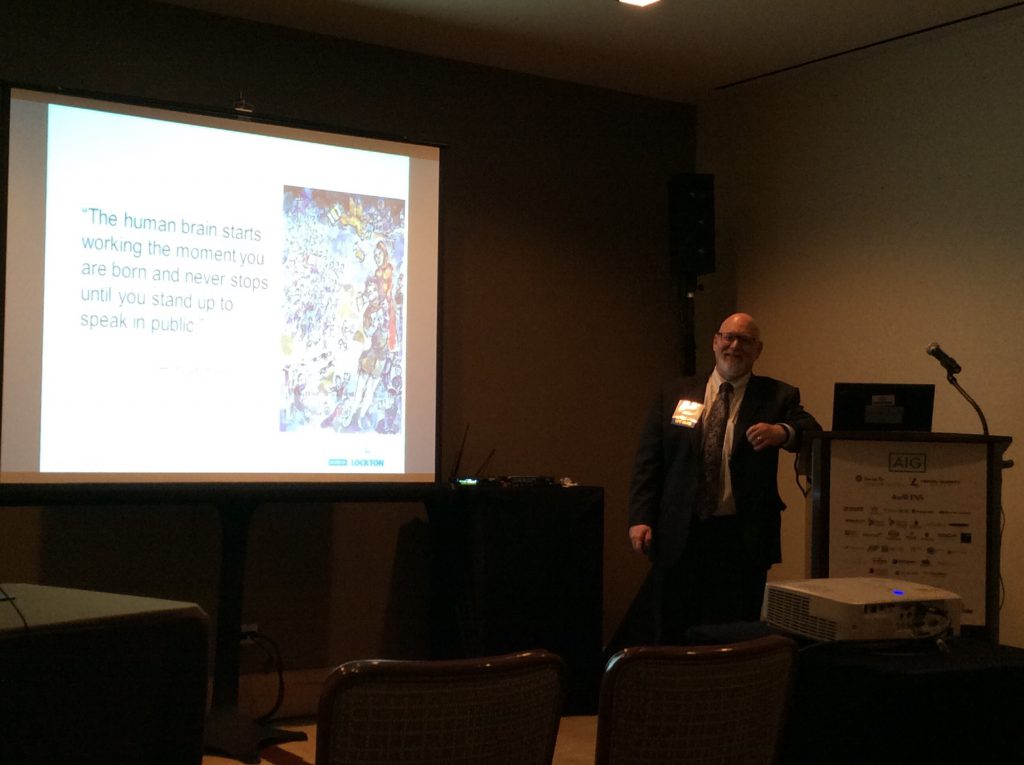Traumatic Brain Injuries
At the 2016 Lockton Complex Risk Symposium in St Louis, David Ripley MD from Rehabilitation Institute of Chicago discussed the dynamics of a brain injury from diagnosis through rehabilitation.
It is estimated that there are 2-5 million brain injuries per year. This is a big range because often many people do not realize they suffered an injury and never seek medical treatment. Many of us have experienced getting struck in the head and being temporarily dazed. About 52,000 deaths per year are attributed to traumatic train injuries.
The leading cause of brain injury used to be motor vehicle accidents but now it is falls by a significant margin. This can be attributed to both the fact that our population is aging but also that that aging population is more active than prior generations.
Brain injuries are classified by:
- Glasgow coma scale which is a 15 point scale with 3 subcategories. It focuses on ability to open eyes, motor response, and verbal response to commands. The biggest problem with the glasgow coma scale is that it can change dramatically over time. Also, it can be impacted by the treatment being rendered (patient being sedated, etc).
- Duration of loss of consciousness. There are many different scales and a common lack of agreement in this area. It also has a poor correlation to outcomes. It is really not clinically useful expect for possibly mild TBI (concussion).
- Duration of post traumatic amnesia. This is the duration of time a patient is unable to form memories of ongoing events. This is a good predictor of outcomes, but often hospitals don’t collect it and there are discrepancies in scoring.
- Type of injury. A focal injury impacts a very specific area of the brain. A diffuse injury impacts many areas of the brain. Hypoxic injury impacts the entire brain (oxygen deprivation caused by lack of blood flow to the brain).
- Rancho Los Amigos scale tracks recovery of brain function from deep brain to cortex. This has to do with a patient’s ability to perform activities of daily living without assistance.
Treatment of TBI
Brain injury treatment and recovery is very individualized as every person responds differently to both the injury and the treatment. There are three main factors that impact prognosis; premorbid factors, injury factors and treatment factors. People with preexisting psychological conditions do not recover well from brain injury. Also, age is a big factor in the ability of the brain to recover with people over age 55 having a more difficult time for recovery.
Injury factors include the severity of the injury, duration of the coma, location and type of injury and other factors.
Treatment factors include how long it took to get care. Many hypoxic injuries result from delay in getting care when the person stops breathing. Also, some medications can inhibit recovery from a brain injury. The biggest factor in recovering from a brain injury is the quality of the rehabilitation care they receive. That is why it is important to get brain injury patients to a “center of excellence” for their rehabilitation.
A good rehab program continues after they are discharged home. There should be a day program and outpatient therapy.


